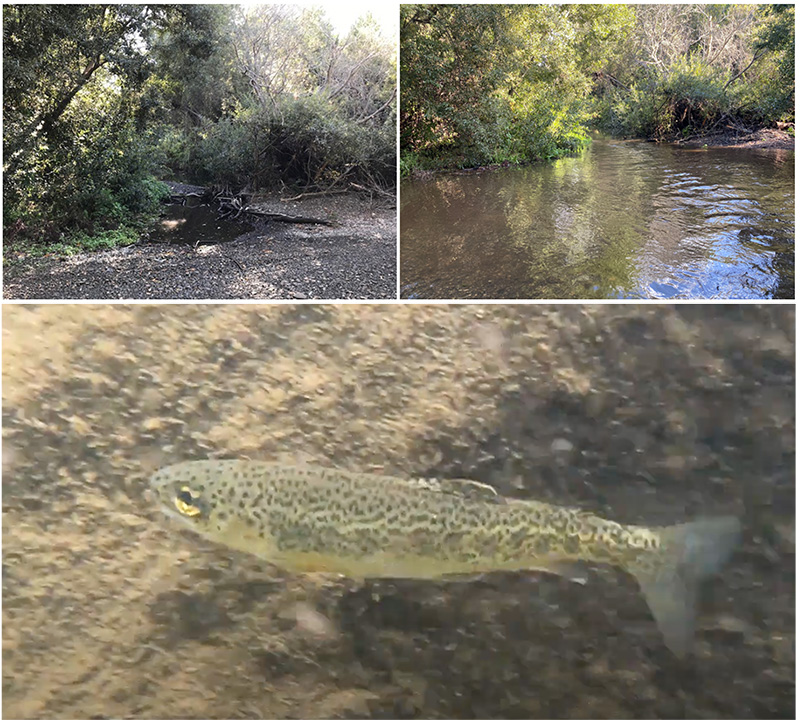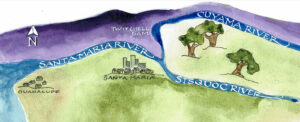
If you are a wild rainbow trout . . .
living in a Central Coast creek, it’s a relatively easy life – when it’s raining. With plenty of flowing water you can move around the watershed to look for food, dodge predators, and make baby fish. But in the hot months ahead? Not so much. Rushing creeks will soon become dry gravel beds. But as a trout, you are good at surviving in tough conditions, and you have learned a few tricks for dealing with dried up creeks.
So, how do you survive until the rain comes back? You look for the pools: the deeper and colder, the better. Cold water usually means seeping groundwater or a fresh spring is nearby, hopefully a source of water you can rely on for months. It may not look like much, but this refuge pool is going to be home for a while.
Of all the miles of creek you swam this winter, you and your surviving siblings will make it through hotter temperatures, less food, and stiff competition in this little hideaway. If you sniffed out the right pool, it will last through the summer and fall, and you will be leaving it hungry and ready for that next big surge of water in the coming winter. Unluckier fish get trapped in pools that might last a few months, but eventually dry out.
All in all, refuge pools are a critical habitat feature that keeps the trout’s life cycle moving forward. Creek Lands Conservation identifies these kinds of features in creek systems between Ventura and Monterey, and we look for ways to make Central Coast creeks more hospitable to trout by increasing flow and improving trout access to summer refuges. Please help us keep wild trout safe through the dry months!
#environmentaleducation #trout #creeklands #creeks #conservation #creeklandsconservation #water #nature #education #californianativespecies #watershedhealth #waterquality #watermonitoring #waterqualitymonitoring #instreamflowmeasurements





